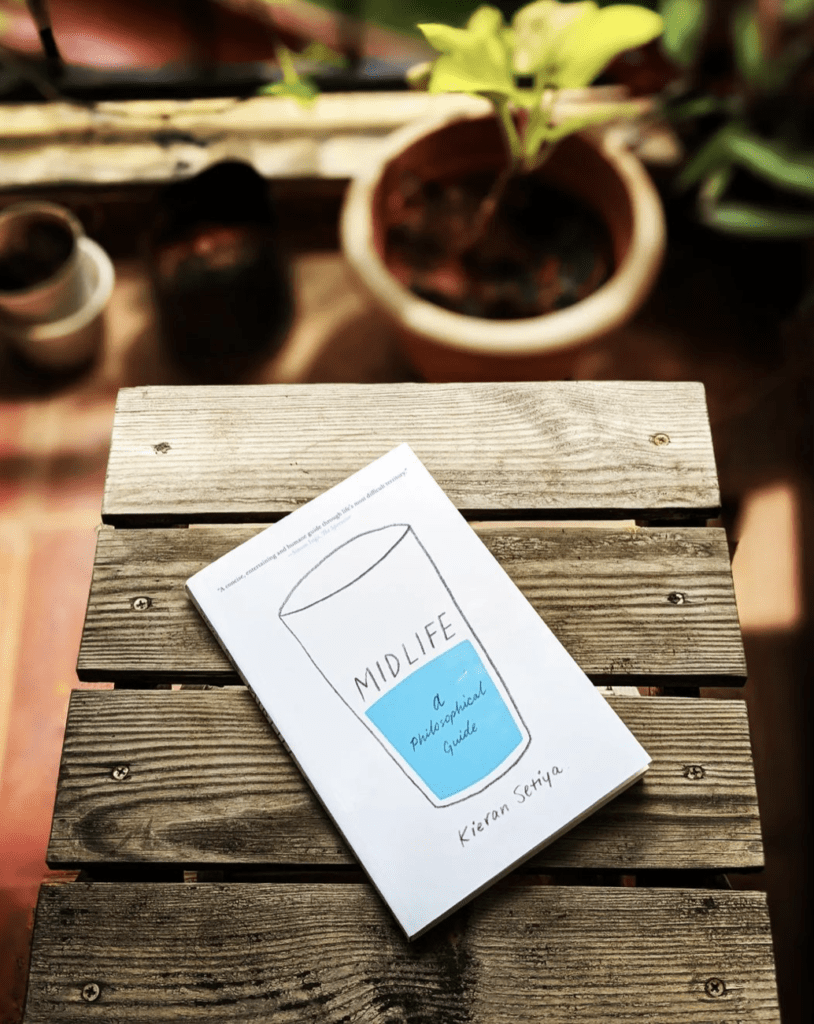Kieran Setiya
A phenomenal coincidence happened as soon as I started reading the book. This book shared an epigraph with the book I had just finished!
“If I am not for myself, who will be for me?
And if I am for myself only, what am I?
And if not now, when?” (attributed to the Talmud)
Of all the combinations of books and quotes, what are the chances!
There is indeed a link between Fromm’s The Fear of Freedom (the book I had just finished) and this, but we will get into that a bit. This book is Kieran Setiya taking a shot at a philosophical guide for midlife. That time of the life when, even if one can’t really complain about how it has turned out thus far, there might be ‘something hollow’ about doing more of it, and perhaps some regret about the choices made. Nostalgia, apprehension, emptiness, futility, regret, inadequacy and a ‘downward slope with the end of the road in sight’. Compared to the earlier stages of life, I have found the literature on this relatively less, so any addition is great! Setiya first takes us through the history of “midlife crisis” and its place in popular culture, including literature, cinema and even a 1982 board game!
‘Is that all there is to it?’, is what he goes after in the second chapter. That feeling after achieving one’s desires. Avoiding paths that are only for the self and ego, making room for pursuits that benefit others and humanity at large, and not exclusively doing things that are ameliorative (righting a wrong / extinguishing a bad – war, fight against injustice etc) as different from existential (contemplation, art, time with family and friends etc) are ways to overcome this feeling.
In ‘Missing Out’, as the title suggests, the focus is on choices, paths not taken, mistakes etc. Many choices in life are incommensurable. For example, watching a sunset alone vs spending time with family and friends. How does one avoid regret? Understanding in granularity the consequences of your road not taken, not overestimating the value of options, and comprehending the downside of that nostalgic younger self who had an abundance of choice are all ways to tackle this. The point that what we miss about ourselves at 18 is not the open choices ahead, but the time when we were free from making choices is something I found interesting.
The fourth chapter is about mistakes, and the focus is on the positive aspects of the mistakes. For example, the people and experiences in your current life that would be lost if you had made a different choice. The texture of life that would have been lost, and the unknowns in the ‘other life’ play a part here. Death is the subject in the next chapter, something that I couldn’t relate to because I have taken it as a given. But there is some excellent framing here that can help you reconcile to the inevitability.
The biggest challenge, as he rightly points out, is not the past or future, but living in the present. And that’s the last chapter, the one I found to be the most useful, especially the telic/atelic framing. Telic refers to goals/milestones and even activities with a specific desired end. A simple example would walking to a store and back (telic) and just going for a walk (atelic). The author brings up the origins of this goal-based and efficiency mindset in Puritanism, an area that Fromm’s book spends quite some time on. If you think about it, midlife is when a lot of telic goals would have been met – whether it’s around fame, money, or love. And that brings up the crisis of what life is all about. Ergo, focusing on atelic activities is a good way to address this. I was reminded of Fromm’s “There is only one meaning of life: the act of living itself”.
It is impossible to get a specific answer to one’s midlife ‘troubles’, but Setiya uses a vast toolkit – pop culture, philosophers from Buddha to Schopenhauer and everyone in between, and his own life and experiences – to provide not just philosophical consolations but practical tips that are very accessible. At 160 pages, I don’t see a downside to reading this especially if you’re in your 40s/50s.
P.S. It is fascinating to see two books separated by almost eight decades approaching this human condition in different contexts, and a neat coincidence that I read them one after the other.

